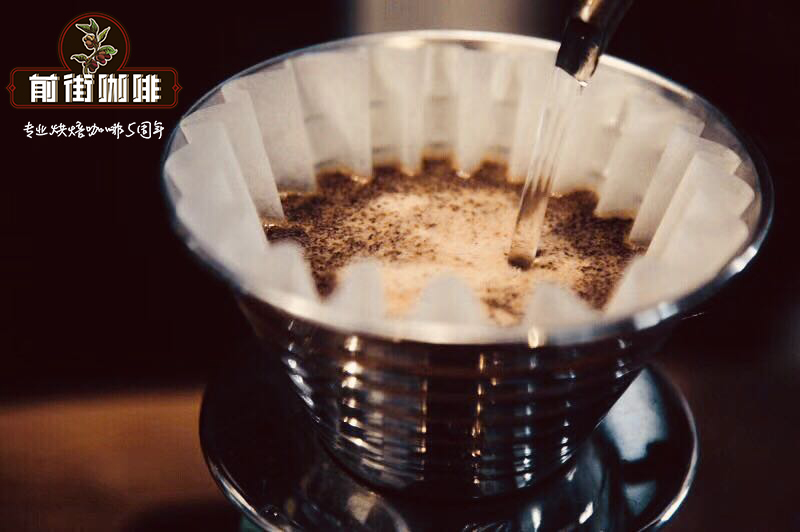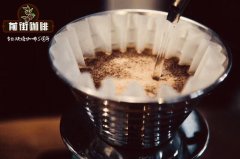Is there a big difference between coffee tanning and washing? a brief introduction to the characteristics of Arabica coffee beans

Professional coffee knowledge exchange more coffee bean information please follow the coffee workshop (Wechat official account cafe_style)
Qianjie-A brief introduction to the treatment of coffee in the sun and washing
All kinds of treatment methods, the purpose is the same, is to peel the beans. Due to the economic considerations of the cost, as well as the differences in climate and other natural environmental conditions, the process of collecting beans may not be the same, but the process will affect the results!
Solarization: tanning is the oldest and most convenient way to treat raw beans.
Sift out the floating beans: pour the harvested coffee fruit into a large trough, and the ripe and full fruit will sink to the bottom; the underdeveloped or overripe fruit will surface and the floating beans need to be removed.
Drying in the second day: then put the whole coffee fruit with meat belt on the bean drying farm and dry it to a moisture content of about 12%. It takes about two to four weeks, depending on the climate of the place of origin.
three。 Shelling: the dried fruit will be naturally dried and the peel, pulp and sheepskin will be removed by the shelling machine, and the raw beans will appear.
The advantages of solarization: 1. Simple, low processing cost. 2. The raw bean is naturally dried in the pulp and absorbs the essence of the fruit, so the fruit is rich, sweet and mellow in thickness.
Disadvantages of solarization: 1. In some producing areas, the sun treatment did not screen the floating beans, resulting in quality ups and downs. During the drying process, the pulp is prone to mildew due to the return of moisture, polluting raw beans 3. The shelling of the machine inevitably hurts the raw beans, resulting in appearance defects.
Washing method: washing method is a common method of raw bean treatment at present.
one。 Sift out floating beans
two。 Pulp removal: fresh fruits are sent to a pulp screening machine (pulping machine) to remove the peel and pulp. Immature fruits are screened at this stage because it is not easy to separate the pulp. After the pulp screening machine, all that is left is pectin, sheepskin and seeds.
three。 Fermented de-pectin: transfer the peeled seeds with pectin into the fermentation tank. Although the name is water [washing] method, in fact, it is not really washing off pectin, but through the fermentation process, pectin is biodegraded. The fermentation process is about 16-36 hours, during which the pectin must be stirred frequently to accelerate the separation of pectin from the seeds. Water washing fermentation produces acid substances such as citric acid, malic acid and acetic acid, which seep into raw beans, making the beans sour more sour than in the sun. After the fermentation is completed, it is really washed-- wash the beans again.
four。 Drying: after washing, it also needs to be dried by sun or machine to reduce the water content to 12%. Because the flesh has been removed by washing
So in the drying process, you don't have to worry about mildew like the sun method. Dried sheepskin raw beans are not as hard as those with pulp and peel in the sun, and can be obtained by using a hulling to remove the shell.
The advantages of washing method: 1. Raw beans are dark green in color, complete in appearance and sell well. 2. The sour taste and bright feeling are better than the sun-dried beans, and the flavor is cleaner.
Shortcomings of washing method: 1. In order to obtain 200g raw beans, it takes 1 kg of fruit to be washed and about 2-10 liters of clean water to be consumed. The cost is high.
Arabica coffee has a low caffeine content, ranging from 0.9% to 1.2%. It is rich in fat and sugar, so it smells soft, unirritating, fresh and sweet, and sometimes has a refreshing and sour taste. Loved by most coffee lovers.
Arabica coffee smells like grass when it is not roasted. After proper roasting, it shows "fruity" (medium-light roasting) and "caramel sweetness" (deep roasting).
Knowledge expansion: Arabica coffee beans are mainly grown in South America, Central America, Africa and Asia. Yunnan, Hainan and Taiwan in China also grow a small amount of Arabica coffee beans.
In short: Qianjie is a coffee research hall, happy to share the knowledge about coffee with you, we share unreservedly just to make more friends fall in love with coffee, and there will be three low-discount coffee activities every month. The reason is that Qianjie wants to make more friends drink the best coffee at the lowest price, which has been Qianjie's tenet for 6 years!
END
Important Notice :
前街咖啡 FrontStreet Coffee has moved to new addredd:
FrontStreet Coffee Address: 315,Donghua East Road,GuangZhou
Tel:020 38364473
- Prev

What are the treatment methods of coffee beans? coffee beans have high defect rate and obvious sweetness.
Professional coffee knowledge exchange more coffee bean information please follow the coffee workshop (Wechat official account cafe_style) Front Street-Coffee Sun treatment brief introduction to Dry process/Natural method is the oldest and most primitive treatment of coffee beans, compared with water washing, this dried coffee is also known as "natural coffee" or "sun-dried coffee"
- Next

Is the coffee honey treatment one of the ways to add honey to know how to treat coffee beans?
Professional coffee knowledge exchange more coffee bean information please follow the coffee workshop (Wechat official account cafe_style) front street-introduction to coffee honey treatment honey treatment: what is honey treatment: according to its original meaning, its scientific name should be pulp natural, the same as the traditional wet treatment, it removes the thick peel of coffee cherries and retains the sticky pulp layer below it (mucilag)
Related
- Beginners will see the "Coffee pull flower" guide!
- What is the difference between ice blog purified milk and ordinary milk coffee?
- Why is the Philippines the largest producer of crops in Liberia?
- For coffee extraction, should the fine powder be retained?
- How does extracted espresso fill pressed powder? How much strength does it take to press the powder?
- How to make jasmine cold extract coffee? Is the jasmine + latte good?
- Will this little toy really make the coffee taste better? How does Lily Drip affect coffee extraction?
- Will the action of slapping the filter cup also affect coffee extraction?
- What's the difference between powder-to-water ratio and powder-to-liquid ratio?
- What is the Ethiopian local species? What does it have to do with Heirloom native species?

